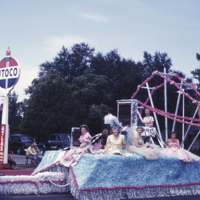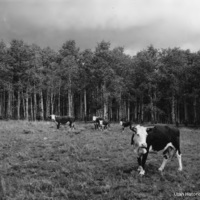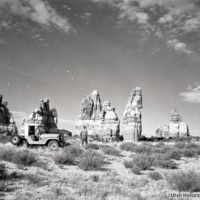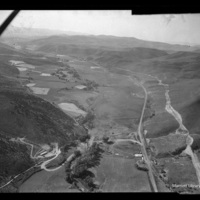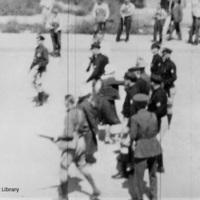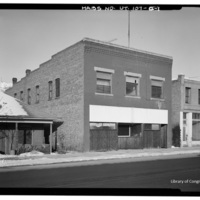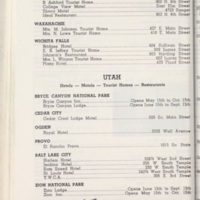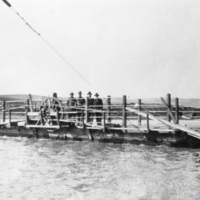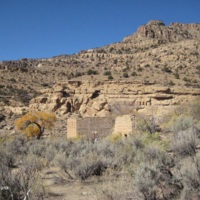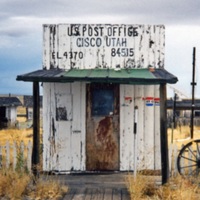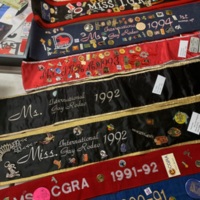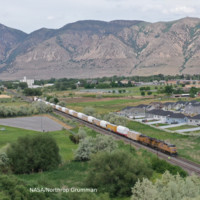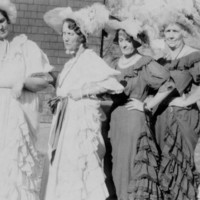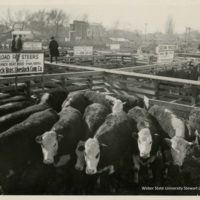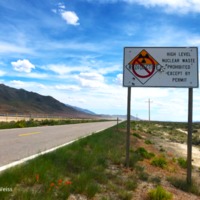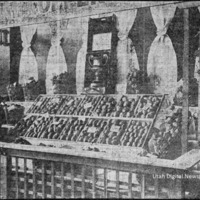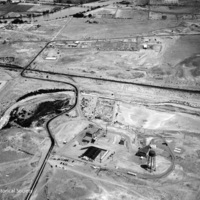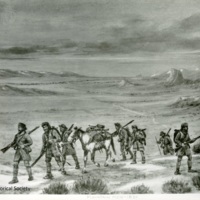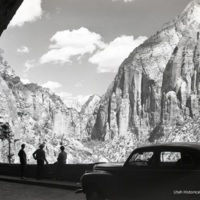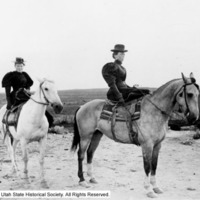Beehive Archive - Rural Utah at a Crossroads
Dublin Core
Title
Beehive Archive - Rural Utah at a Crossroads
Items in the Beehive Archive - Rural Utah at a Crossroads Collection
Brigham City Peach Days
Every autumn, large crowds descend on the small rural town of Brigham City for "Peach Days." It's the oldest harvest festival in Utah. And it all started with a one dollar investment in peach pits back in 1855.
Each September, in northern Utah, the…
Utah Rejects the White Elephant
The United States federal government controls about 65% of land in Utah. The goal of maintaining these lands for public use tends to polarize Utahns. But there was a time when Utah leaders were not averse to federal regulation of public lands.…
The Canyonlands Controversy
Canyonlands is more than just Utah’s third national park. Its designation in 1964 occurred after a fight over who exactly public lands are meant for.
In the late 1950s, the National Park Service began assessing lands for a new national park in the…
Town That Drowned: The Rockport Reservoir Tradeoff
If you could provide drinking water for thousands of people by displacing twenty-seven farming families, would you do it? Utah leaders faced this very dilemma in the 1950s. Find out what they decided.
How would you weigh the cost of progress? As…
Women Hold the Line in Carbon County
When Carbon County coal miners from the National Miners Union went on strike in 1933, their wives, sisters, and daughters were right there beside them. These women proved to be formidable adversaries in the fight for workers’ rights.
Women have…
The Last Brothel in Utah
Urban spaces in twentieth century Utah are known for their vice -- gambling, prostitution and more. But did you know the last brothel to close in Utah was actually in a rural town?
Sitting in the second floor windows of Helper’s Carbon Hotel,…
Utah’s Green Book
In the 1940s, new roads, affordable cars, and an interest in national parks meant that more Americans were packing up their vehicles and hitting the open road. For Black travelers driving through rural areas of Utah, the Green Book was a vital…
Ghost Towns: Dewey
There are only three roads in Utah that bridge the Colorado River, and only a handful of crossings. The ghost town of Dewey is one of those places and early settlers of the region made good use of this crossing.
Getting across the Colorado River is…
Ghost Towns: Sego, a Coal Town with a Colorful Past
Down a bumpy canyon road in the Book Cliffs of southeastern Utah, curious travelers can find the ghost town of Sego. Named for Utah’s state flower, it’s a dusty coal town with a colorful past.
The canyon where the ghost town of Sego sits has been…
Ghost Towns: Cisco
A former railroad and ranching hub, the tiny settlement of Cisco became a ghost town after highway travel through the remote area was rerouted. But is Cisco still a ghost town today?
On the eastern edge of Grand County, a few miles south of…
Utah’s Gay Rodeo
Saddles, denim, country music, and… drag queens? It’s an unexpected combination but an important one for community and belonging in queer rural Utah. Find out more about Utah’s famous gay rodeo.
Utah is known for its rodeos. Burly cowboys ride…
Rural to Rockets: Box Elder County Takes Off
So, you are a giant aerospace company and you want to build a rocket plant: what do you look for? This week, learn how one Utah town met all the requirements to become a center for the US rocket industry and how that decision forever changed its…
In This Little Town of Ours, We Have a Literary Club
In 1928, a women’s club in Moab adopted an official song that crowed: “In this little town of ours, we have a literary club, and we derive from it everything good, it helps the town and public in numerous ways.” Learn more about these women and…
Ogden Union Stockyards
Do you know where your food comes from? Utahns once depended on local butchers for fresh meat. But, in the early 1900s business boomed for the Ogden Union Stockyards, signaling a shift in how and where Utahns purchased their food.
Today, most…
West Desert Wasteland: Pollution and Sovereignty in Rural Utah
Just around 45 miles west of Salt Lake City is a vast landscape shrouded in mystery and controversy. It’s also a holding place for some of the US military’s deadliest materials.
Perhaps no part of Utah suffers as much disregard as Utah’s arid…
Utah’s Potato Growing Clubs
Potato growing clubs became all the rage in the early 20th century as interest in a formal agricultural education grew.
Agricultural work is critical to rural Utah’s history. But, it wasn’t until Utah State Agricultural College -- known as USAC…
The Militarized West
World War II and the Cold War brought the military to much of rural Utah, transforming those places in the process. The economic boost that followed was long-lasting in some communities, but devastatingly short-lived in others.
While the federal…
The Mountain Man: a Romanticized Symbol
Rugged individualism is practically synonymous with the American West, and mountain men are the embodiment of that ideal. But the ideal tends to mask the real significance – and legacy – of mountain men in Utah.
In the early nineteenth century,…
National Monuments to National Parks
Utah is home to five national parks that protect stunning red-rock landscapes. All but one of them began as a national monument. What's the difference, you may ask? Learn all about it.
Zion National Park is a world-famous destination, and its annual…
Sacred Healing: Traveling Midwives in Early Rural Utah
Frontier life in late-nineteenth century Utah was rough. Today, many rural Utahns still struggle with access to medical care, but once upon a time midwives traveled throughout rural Utah, providing healthcare services to those in isolated areas.
In…

